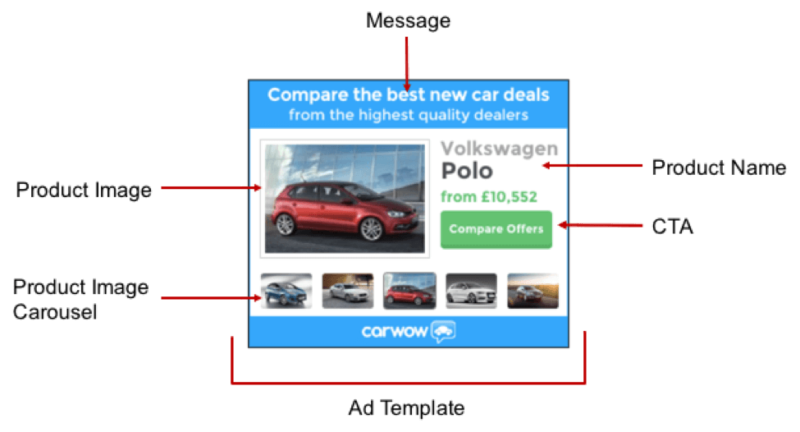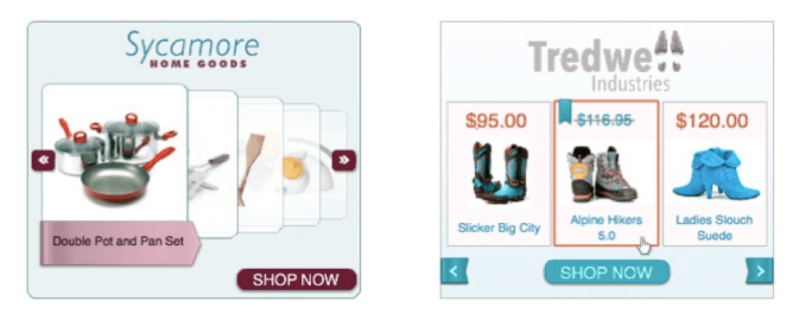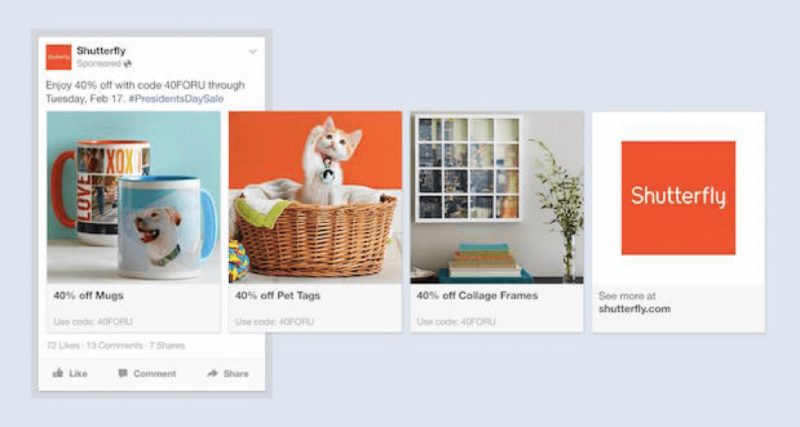Scaling Programmatic Advertising With Dynamic Ads
Collecting data is easy -- finding smart ways to use it to deliver better, more compelling ads to customers is much more difficult. That's where dynamic ads come in, as columnist Matt Ackley explains.

So you’ve tagged your site. You’ve identified some interesting audience segments. You’ve got some great data, and you are ready to go!
However, data only gets you to the door. The creative is what gets you through (and keeps you in the room).
Now, look at your creative execution and compare it to your high-level marketing strategy — how closely aligned would you say they are?
Marketers get jazzed about programmatic due to the promise of big data — the promise of delivering the right message to the right person at the right time. However, brands quickly learn that even though collecting data is easy, finding smart ways to use it to deliver better, more compelling experiences to customers is much more difficult.
The challenge only becomes more complex for large retailers who might have thousands or maybe even millions of different products and iterations in their catalog. Developing, scaling, and maintaining unique creative — while simultaneously ensuring that the creative is personalized and relevant to customers — is an incredibly daunting task. Add in seasonal promotions or inventory fluctuations, and it only gets more complicated.
The irony is, customers want and expect more personalized experiences. So do advertisers. A November 2014 study by IPG Media Lab and Yahoo found that personalized ads boosted brand favorability and purchase intent significantly. And, there’s a surprisingly broad range of information that customers are comfortable with advertisers using to personalize those ads, from location data to prior shopping history to previous ad exposures.

Collecting customer data is the first step in delivering personalized experiences. Taking that data and using it to deliver dynamic advertising helps bridge the gap between the data itself and the person.
What Is Dynamic Advertising?
Dynamic advertising comes with a bunch of different names. Google refers to it as Dynamic Remarketing, while Facebook calls it Dynamic Product Ads. Sometimes, you’ll hear it referred to as Programmatic Creative.
At Marin Software, we often refer to it as dynamic product retargeting, similar to Facebook’s naming convention, but we also include Web banner ads in our definition. Whatever your preferred nomenclature, dynamic advertising refers to ads where the design elements — the images, the message, and the format — are dynamically generated based on data captured on a particular audience.
What’s In A Product Feed?
A product feed is just a data file that helps categorize and structure a list of products and their attributes. In addition to basic product information like the name, image, product description, and price, the feed often includes metadata like product category, gender, size, availability, shipping information, condition, and so forth.
Finding Actionable Data To Build An Ad
As shown in the chart above, there’s a wide variety of data that advertisers can potentially use to customize ads. The most basic type of dynamic advertising involves customizing an ad creative based on a user’s browsing history. Ad creative is automatically generated based on the products and categories a customer has shown interest in.
Although there are additional factors that can be used in customizing creative — visitor recency, prior ad engagements, location, weather data — we’ve found that recency is the simplest and most powerful performance driver.
Based on the data that’s captured, ad creative components are assembled, and the ad is served to the user — as in the example below.

Following is a brief overview of some dynamic advertising options.
Google Product Listing Ads (and Bing Product Ads)

Let’s start off with an ad format that’s not dynamic. While product feeds dynamically generate Product Listing Ads (PLAs) and Product Ads, these ads are only served in response to a keyword search and don’t take any audience data into account.
Dynamic Remarketing Ads

Google does offer a dynamic ad product called Dynamic Remarketing. These are dynamic banner ads that run on the Google Display Network.
Facebook Exchange Dynamic Retargeting
Facebook offered dynamic ads before it ever released its Dynamic Product Ads offering. Facebook Exchange (FBX) dynamic retargeting has enabled advertisers to serve dynamic product ads on the Facebook News Feed and Right Hand Rail, using a demand-side platform or a retargeting platform.
Aesthetically, there’s little difference between dynamic ads served through FBX or through Facebook’s native platform. However, there are a couple key differences:
- Dynamic FBX ads only run on desktop inventory
- Dynamic FBX ads are limited to single product ads
Facebook Dynamic Product Ads (DPAs)

Although DPAs may not be a breakthrough innovation in dynamic advertising, Facebook added some new wrinkles to its native dynamic ad product.
- Unlike Dynamic FBX Ads, Facebook’s DPA can be served to users on both Facebook’s desktop website and its mobile app. This is obviously an important step for Facebook considering over half of its user base is now mobile-only.
- Advertisers have been using multi-product dynamic banner ads on the Web for awhile, but can now do so on Facebook as well. Its multi-product ads enable advertisers to feature three products within a single ad.
- DPAs also enable advertisers to enhance their targeting using Custom Audiences and Lookalikes.
Dynamic Product Retargeting

While Google and Facebook’s offerings give advertisers an easy method to get up and running with dynamic product ads, they aren’t the only options. The third-party platforms that offer advertisers dynamic advertising opportunities have also been innovating. They provide a few unique benefits of their own, including:
- Data ownership
- Better workflow and efficiency
- More advanced logic for how the creative is generated
- More creative customization
Three Steps For Success In Dynamic Advertising
- Start simple and build. We’ve found that the brands that start simple and expand their dynamic advertising efforts over time find the most sustained success. This might mean starting off by only focusing on one channel, or testing dynamic ads with one or two categories, or not going too crazy designing a hundred different banner templates.
- Be relevant – obviously relevant to your customers. We’ve found the best performing dynamic ad concepts are embarrassingly straightforward – the ad creative features the last product the user has viewed. And anecdotally, we believe one of the main reasons such a simple approach performs so well is because there’s a clear connection between an action a user has taken, and the message that they’re being presented. While that last product viewed may not represent the product the customer was most interested in, the connection is vivid and direct. Familiarity is comforting.
- Don’t skimp on the creative strategy… Test! Dynamic ads are almost too easy. The product name, image, and details are automatically pulled into the ad. All you need to do is customize a little bit of the message and maybe the call to action, right? Yes, that’s right, but tiny changes in copy or design could potentially affect your conversion rate significantly, and the only way to know for sure is to test your creative.
Whether it’s through Google’s or Facebook’s offering, or via a third-party platform, dynamic product advertising is a necessity for any retailer. It represents the first step for developing a more comprehensive, personalized approach to communicating with your customers and embarking on a continued relationship.
Contributing authors are invited to create content for MarTech and are chosen for their expertise and contribution to the search community. Our contributors work under the oversight of the editorial staff and contributions are checked for quality and relevance to our readers. MarTech is owned by Semrush. Contributor was not asked to make any direct or indirect mentions of Semrush. The opinions they express are their own.
Related stories
New on MarTech